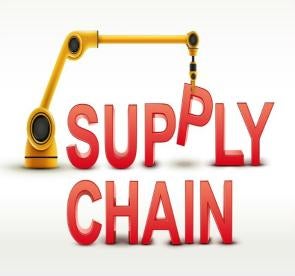The global market for all counterfeit items is booming, with the value of goods seized by U.S. Customs and Border Protection in fiscal year 2014 exceeding $1.2 billion. Moreover, the U.S. Department of Homeland Security reported that the number and value of seizures of counterfeit automotive parts increased by 83 percent and 66 percent, respectively, over the previous year. In addition, counterfeiters have become extremely sophisticated and the risk of counterfeiting extends to electronic parts, mechanical parts, and industrial fasteners. The bottom line: Counterfeit parts are an increasing threat to manufacturers’ supply chains.
Manufacturers need to have systems and procedures in place to detect and avoid the use of counterfeit parts. Effective counterfeit prevention procedures require coordination among several functions in a company, including purchasing, quality, and legal. Companies also need to incorporate counterfeit detection and avoidance requirements into the terms and conditions they impose on suppliers.
To address the risk posed by counterfeit parts, manufacturers should take at least the following steps:
Identify and Address Both Supplier and Item Risk
An effective counterfeit detection and avoidance system can be “risk-based” — that is, companies do not have to adopt a “one-size-fits-all” approach that subjects every incoming part to the same level of scrutiny. Rather, it can be tailored based on the level of risk that the part may be counterfeit. There are two primary types of risks that should be taken into account in such a risk assessment: supplier risk and item risk.
“Supplier risk” refers to the risk of counterfeiting associated with the entity that is supplying the part. The original manufacturer of the part would be a low-risk supplier, as there would be clear traceability of the part back to the original manufacturer and little opportunity or economic incentive for the original manufacturer to counterfeit its own part. Conversely, if the supplier is a “gray market” independent distributor, particularly one that is unable to provide documentation tracing the part back to the original manufacturer, the risk that the part received may be a counterfeit would be higher. Accordingly, one of the universally accepted best practices for counterfeit parts mitigation is to require that purchases of parts be made, whenever possible, only from the original manufacturer or one of its authorized distributors or dealers.
“Item risk” refers to the degree of risk posed by the part itself, both in terms of the risk to safety and reliability if the part at issue were counterfeit, and the risk that the part at issue is a target for counterfeiting. Item risk is largely a factor based on a part’s:
-
Economic value
-
Criticality to safety or performance
-
Volume of use/sales
-
Production status
-
Ease of duplication or manufacture
One category of parts that is recognized as posing an increased risk of counterfeiting is out-of-production parts, often referred to as “obsolete parts.”
Develop Procedures to Deal With the Unique Issues Posed by Counterfeits
Under typical commercial terms and conditions, a buyer rejecting a nonconforming item is frequently required to return the rejected item to the seller. That practice is problematic when the “nonconformity” at issue is that the part is suspected of being counterfeit. Returning a suspect counterfeit to the party that supplied it runs the risk that the counterfeit part will remain in the supply chain and simply be passed off to another customer that may not be as vigilant. Therefore, an effective anti-counterfeiting system requires the ability to quarantine and impound suspected counterfeit parts, without returning them to the supplier for refund or replacement until they are confirmed as authentic.
Companies should also develop appropriate reporting mechanisms to report the discovery of a suspected counterfeit, both internally to appropriate company officials and externally to the appropriate authorities.




 i
i

